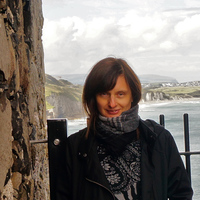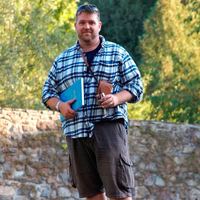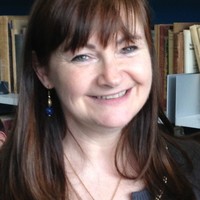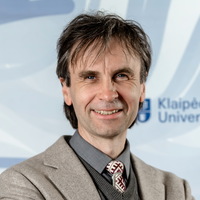
Marina Milic
Related Authors
Andrea Dolfini
Newcastle University
Rob Collins
Newcastle University
Brendan O'Neill
University College Dublin
Christine Morris
Trinity College Dublin
Martina Revello Lami
Universiteit Leiden
Loes Opgenhaffen
Saxion University of Applied Science and Technology
Barry Molloy
University College Dublin
Costis (Konstantinos) Dallas
Vilnius University
Vykintas Vaitkevičius
Klaipeda University
Rimvydas Laužikas
Vilnius University
InterestsView All (10)










Uploads
Papers by Marina Milic
https://www.degruyter.com/view/j/opar.2018.4.issue-1/opar-2018-0006/opar-2018-0006.xml?format=INT
ABSTRACT:
The role of 3D modelling in archaeology is increasing exponentially, from fieldwork to architecture to material culture studies. For the study of archaeological objects the roles of digital and print models for public engagement has been much considered in recent literature. For model makers, focus has typically been placed on exceptional and visually striking objects with inherent appeal. In contrast, this paper explores some of the potential roles for 3D digital models for routine artefact research and publication. Particular emphasis is placed on the challenges this technology raises for archaeological theory and practice. Following a consideration of how 3D models relate to established illustration and photographic traditions, the paper evaluates some of the unique features of 3D models, focussing on both positive and negative aspects of these. This is followed by a discussion of the role of potential research connections between digital and craft models in experimental research. Our overall objective is to emphasise a need to engage with the ways in which this gradual development has begun to change aspects of long-established workflows. In turn, the increasing use of this technology is argued to have wider ramifications for the development of archaeology, and material culture studies in particular, as a discipline that requires reflection.
2014 Bringing down the house: House closing deposits at Çatalhöyük. In Book Bringing down the house: House closing deposits at Çatalhöyük. I. Hodder, ed. Pp. 109-121. Vol. Volume. 32. Los Angeles: Cotsen Institute of Archaeology, University of California, Los Angeles.
includes erratum: full version of Table 1
https://www.degruyter.com/view/j/opar.2018.4.issue-1/opar-2018-0006/opar-2018-0006.xml?format=INT
ABSTRACT:
The role of 3D modelling in archaeology is increasing exponentially, from fieldwork to architecture to material culture studies. For the study of archaeological objects the roles of digital and print models for public engagement has been much considered in recent literature. For model makers, focus has typically been placed on exceptional and visually striking objects with inherent appeal. In contrast, this paper explores some of the potential roles for 3D digital models for routine artefact research and publication. Particular emphasis is placed on the challenges this technology raises for archaeological theory and practice. Following a consideration of how 3D models relate to established illustration and photographic traditions, the paper evaluates some of the unique features of 3D models, focussing on both positive and negative aspects of these. This is followed by a discussion of the role of potential research connections between digital and craft models in experimental research. Our overall objective is to emphasise a need to engage with the ways in which this gradual development has begun to change aspects of long-established workflows. In turn, the increasing use of this technology is argued to have wider ramifications for the development of archaeology, and material culture studies in particular, as a discipline that requires reflection.
2014 Bringing down the house: House closing deposits at Çatalhöyük. In Book Bringing down the house: House closing deposits at Çatalhöyük. I. Hodder, ed. Pp. 109-121. Vol. Volume. 32. Los Angeles: Cotsen Institute of Archaeology, University of California, Los Angeles.
includes erratum: full version of Table 1